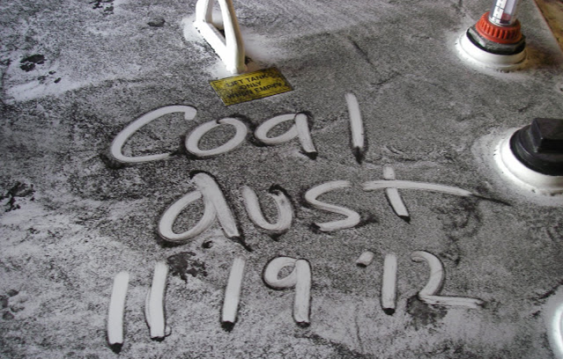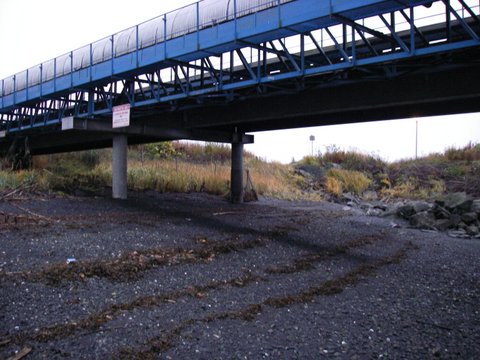Northwest communities faced with the prospect of new or expanded coal terminals would do well to study their real-life impacts in other places. As Sightline has reported extensively, coal terminals have a marked tendency to produce chronic local pollution. To take just one nearby example, consider the Seward Coal Loading Facility in Alaska, which has plagued its neighbors for years and now faces serious legal actions because of its practices.
The current dustup in Alaska can be traced back to at least the spring of 2007 when coal terminal operators in Seward loaded a ship during high winds, releasing large clouds of coal dust in the process. In response, the Resurrection Bay Conservation Alliance, a community organization, brought the dust clouds to the attention of Alaska State regulators by supplying photos and video evidence of dust blowing off the terminal’s stockpiles, covering nearby fishing boats and neighborhoods.

Their concerns were well-founded. Even consultants hired by the facility reported in 2007 that although the coal terminal possessed a dust collection system called a “baghouse,” which could have reduced the release of particles by an estimated 99 percent, it had never been used. In fact, the equipment was obsolete, and it would have cost approximately $1 million to replace. The facility’s co-owners—the Alaska Railroad Corporation, which also delivers coal to the terminal, and Aurora Energy Services— failed to secure a replacement.
By 2009, local advocates had become frustrated with the terminal’s pollution. The Alaska Community Action on Toxics and the Sierra Club filed a lawsuit alleging that the terminal’s owners had violated the US Clean Water Act by allowing coal to fall regularly from a conveyor belt into Seward’s Resurrection Bay.
Regulators were growing impatient too. In response to ongoing coal dust problems, the state of Alaska imposed a fine of nearly $213,000 in 2010, stipulating that $165,000 be spent on required equipment to control the coal dust.
Five years on and the lawsuit remains unresolved. In March 2013, a federal district lower court sided with the coal terminal owners and dismissed the citizen suit, reasoning that any coal discharge into the water was covered by the site’s stormwater general permit, issued by the US Environmental Protection Agency, with requirements to monitor and limit pollutants in stormwater runoff. But then in September 2014, the Ninth Circuit Court of Appeals overturned the lower court decision, determining that violations did in fact occur. The appeals court concluded that the general permit allowed only specific non-stormwater discharges (such as water runoff from firefighting emergencies) and prohibited the dumping of coal or coal dust. As a result, the case returns to the lower court, which must decide whether the Seward facility needs an individual permit for water discharge with specific limits set for that facility.

While the legal proceedings grind on, the Alliance and other organizations produced and posted a 5-minute video documenting their concerns and explaining why they want state-of-the-art technology to contain coal dust at the Seward facility. In July 2014, a coalition of citizen groups published the results of their own air quality monitoring near the facility, reporting that particulate concentrations in some cases exceeded World Health Organization recommendations. The data in that report—along with the photographic evidence—paint a damming picture of the coal terminal’s operations.
It remains to be seen whether the Seward coal terminal will finally be held to account. Whatever happens, though, the slow pace of the legal system and the terminal operator’s intractability should worry communities who may soon play host to large-scale coal facilities.
John Abbotts is a former Sightline research consultant who occasionally submits material that Sightline staff members turn into articles.


Comments are closed.